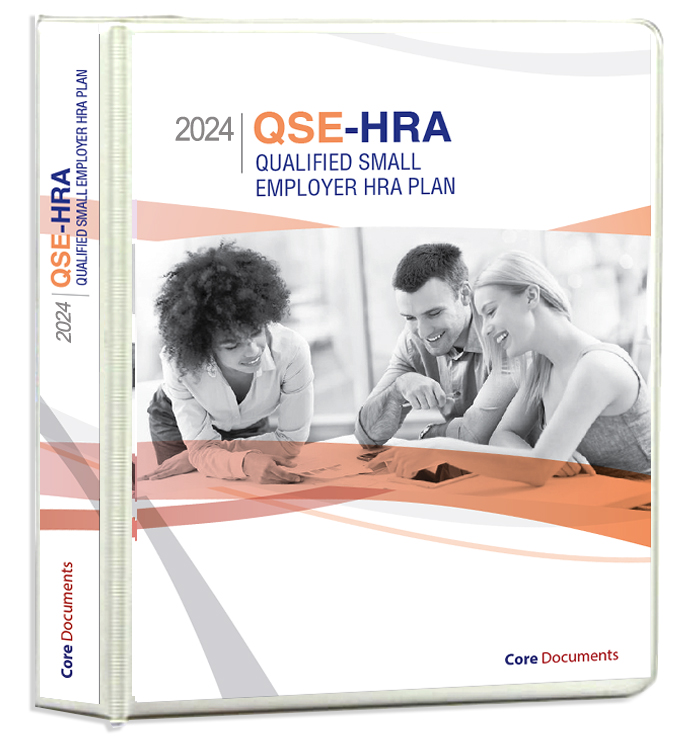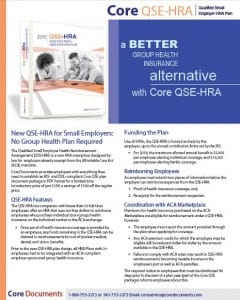Home / Blog / How is an employer eligible for a QSE-HRA? -- Group size, GHP rule
How is an employer eligible for a QSE-HRA? — Group size, GHP rule
While the QSE-HRA has been wildly popular with those who know about it, many small employers miss out because they are unaware of this valuable resource for employee health benefits. Let’s look at what makes an employer eligible for a QSE-HRA.

When is an employer eligible for a QSE-HRA?
The Qualified Small Employer Health Reimbursement Arrangement (QSE-HRA) was created by the 20th Century Cures Act of 2016 (Cures Act). Since the Cures Act dealt primarily with laws to “accelerate medical product development,” media reports gave little or no attention to the QSE-HRA. As a result, while the QSE-HRA has been wildly popular with those who know about it, many small employers miss out because they are unaware of this valuable resource for employee health benefits. Let’s look at what makes an employer eligible for a QSE-HRA in the first place.
For 2025, the maximum allowed QSEHRA annual benefit is $6,450 per employee electing individual coverage, and $13,100 per employee electing family coverage.
There are two rules that decide what makes an employer eligible for a QSE-HRA:
- Group health plan status, and
- Number of employees.
Group health plan status
⇒ No group health plan rule
Section 9831(d)(3)(B)(ii) of the U. S. Code defines an “eligible employer” as one that does not offer a group health plan for employees (per Section 5000(b)(1)). This includes:
- Group health insurance through a Section 125 Premium Only Plan or Cafeteria Plan;
- Health Reimbursement Arrangement (HRA);
- Health Flexible Spending Arrangement (Health FSA); and
- A group plan that provides coverage only for excepted benefits (such as vision or dental health).
⇒ QSE-HRA eligibility date
Employers that do not currently have a group health plan for employees may start a QSE-HRA at any time.
However, an employer with a group health plan in place may not change over to a QSE-HRA until the first day of the month following a month when the group plan was in place.
A QSE-HRA may not be established during any month when a group health plan was active for any day within that month. For example:
- If the group plan ends on December 31, the QSE-HRA may start for any month beginning January 1 of the following year; however,
- If a group plan ends on September 4, the QSE-HRA plan year cannot begin until October 1 or later.
⇒ Retiree group health plan
Since a retiree is classified as a former employee, a company does not have to end a group health plan for retirees in order to become an employer eligible for a QSE-HRA.
⇒ HRA or FSA balances
An employer eligible for a QSE-HRA may not allow employees continued access to funds in a prior HRA or FSA.
⇒ HSA contributions
The employer providing a QSE-HRA to employees may continue to make contributions to an employee’s Health Savings Account (HSA) and to allow the employee to continue making pre-tax contribution to his or her HSA through a Section 125 Cafeteria Plan.
HRA News:
The new Individual Coverage HRA is available for employee groups of any size, reimburses employees for health insurance premiums, and has a grandfathering option for employees currently covered by a traditional employer-sponsored group health plan. Learn more.
For 2024, the maximum allowed QSEHRA annual benefit is $6,150 per employee electing individual coverage, and $12,450 per employee electing family coverage.
Number of employees
IRS guidance for the QSE-HRA says a qualified small employer has fewer than 50 full-time or full-time equivalent employees.
An employer with fewer than 50 employees is not an applicable large employer (ALE) subject to the Affordable Care Act’s (ACA) shared responsibility and reporting provisions.
This <50 employee rule refers to the total number of employees, includes full-time and part-time workers, and whether or not an employee is eligible to participate in the QSEHRA.
⇒ How to calculate number of employees
The formula for number of employees is an annual average of each month’s full-time and full-time equivalant (part-time) employees. Here is how to account for each group.
Full-time employees
According to the IRS, a full-time employee “has on average at least 30 hours of service per week during each calendar month in the previous 12 months, or at least 130 hours of service during the calendar month.”
- Determine the number of full-time employees for each calendar month.
- Add together the 12 monthly totals.
- Divide by 12 for average monthly full-time employees.
Full-time equivalent (part-time) employees
IRS rules state, “A full-time equivalent employee is a combination of employees, each of whom individually is not a full-time employee, but who, in combination, are equivalent to a full-time employee.”
- Add together the hours of all non-full-time employees in each calendar month for the previous 12 months, up to 120 hours each.
- Divide each month’s total by 120 hours for that month’s full-time equivalent employees.
- Add together the 12 monthly totals.
- Divide by 12 for average monthly full-time equivalent employees.
Combined employee count
Add the final number from each employee classification (above).
- If the total is 1-49, your company is not an ALE and is an employer eligible for a QSE-HRA.
- If 50 or higher, your company is an ALE and may not provide a QSE-HRA for employees.
Click here to see an example of these calculations with a spreadsheet you can download.
⇒ ALE status changes during QSE-HRA plan year
When an employer becomes an ALE while providing a QSE-HRA to employees, the employer is no longer an employer eligible for a QSE-HRA effective January 1 of the following year and must close the QSE-HRA by that date.
The table below shows pertinent dates for an employer showing 50 or more combined full-time and full-time equivalent employees for the year ending December 31, 2020.
|
Current QSE-HRA
Plan Year Begins
|
Current QSE-HRA
Plan Year End Date
|
Employer becomes
ALE as of
|
Employer closes
QSE-HRA
|
| 1/01/2020 |
12/31/2020 |
01/01/2021 |
12/31/2020 |
| 07/01/2020 |
06/30/2021 |
01/01/2021 |
12/31/2020 |
Run-out period for claims
When an employer providing a QSE-HRA is no longer an eligible employer, and the employer closes the QSE-HRA, the employer may allow a run-out period for claims incurred during the time the QSE-HRA was operational and the employee was eligible to receive reimbursements.

Deluxe Binder Version ($249)
QSE-HRA Plan Document Package
Electronic Version only $199
Order Online

Our friendly and knowledgeable staff is available to
answer any questions you may have via e-mail or phone call,
Monday through Friday, 9 am to 5 pm ET:
1-888-755-3373
No annual subscription fee required: Core Documents will notify you when there are sufficient changes in the Code to require amending and restating your Plan. You can amend and update anytime for just $199, and only when necessary which is the most cost effective way to establish and maintain a HRA Plan.
Video
04:00 Minute Executive Summary:
Brochure with forms

Click image to download.